Southampton Tramways Company
Summary
Photographs of the earliest days of the Southampton horse trams are yet to come to light, so it is not possible to say what the uniform policy was during the first decade of operation (1879 to 1889). By the 1890s however, the photographic evidence is much richer, and it is clear that in common with the vast majority of Victorian horse tram operations, drivers simply wore smart but informal attire, including jackets, overcoats and leather aprons; headgear ranged from the bowler hat to the flat cap.
Conductors were clearly expected to dress smartly, but the only company contribution to this appears to have been to issue a kepi-style cap; this probably bore an employee number in metal letters. No other insignia appears to have been carried, either on the jackets or the overcoats.
Somewhat unusually for a horse tram company, a photo has survived depicting senior members of staff (see below). This clearly shows that inspectors were also issued with kepi-style caps, though in contrast to the conductors, these appear to have borne a large, rather elaborate cap badge. Inspectors were probably expected to wear smart overcoats, but whether company largesse extended to providing them is difficult to say, though the absence of insignia would tend to suggest not.
For a history of Southampton's tramways, see '100 Years of Southampton Transport'; Southampton City Transport and Southampton City Museums (1979).
Images
Horse tram drivers and conductors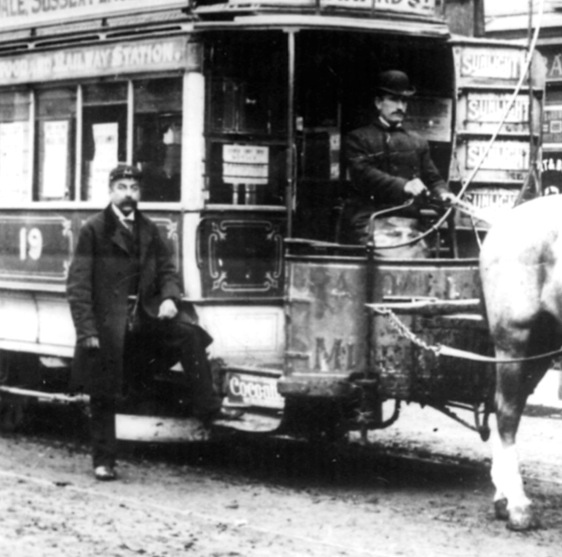
The crew of Horsecar No 19 pose for the camera at the end of Oxford St prior to turning around for the return journey — photo undated, but almost certainly taken in the 1890s. The conductor has a small badge on his kepi cap, which is probably a double-digit employee number; the driver is wearing a bowler hat and leather apron. Photo courtesy of the Tramways and Light Railway Society, with thanks to David Voice.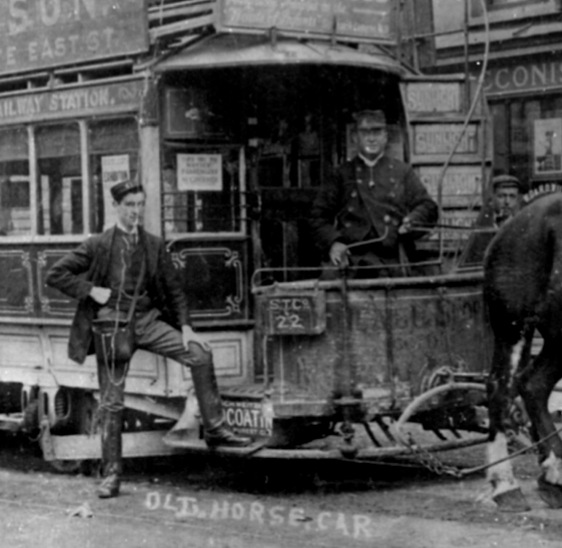
Horsecar No 22 at the same location as the previous photo (Oxford St) — undated, but certainly taken no earlier than 1890 when No 22 was delivered. The driver is wearing a 'lancer-style' coat, possible a coachman's coat, along with a tall kepi cap, both probably self-purchased. The conductor is wearing the standard, company-issued kepi-style cap, bearing what would appear to be a double digit employee number. Photo courtesy of the Tramways and Light Railway Society, with thanks to David Voice.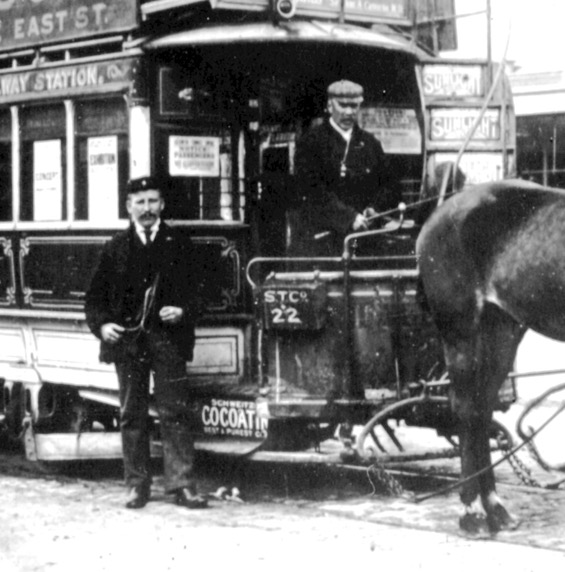
Horsecar No 22 again, this time with conductor and driver outside the Shirley Temperance Hotel — photo undated, but thought to have been taken in 1897, the year prior to the corporation take-over. The conductor is wearing a company-issued kepi cap that appears to carry a small badge, probably a single-digit employee number; the driver meanwhile sports a tartan cap. Photo courtesy of the Tramways and Light Railway Society, with thanks to David Voice.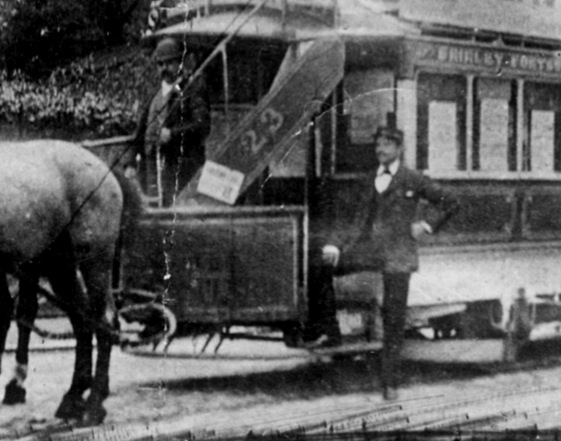
Driver and conductor pose with Horsecar No 23 — photo undated, but certainly taken in the 1890s. Photo courtesy of the Tramways and Light Railway Society, with thanks to David Voice.
Senior staff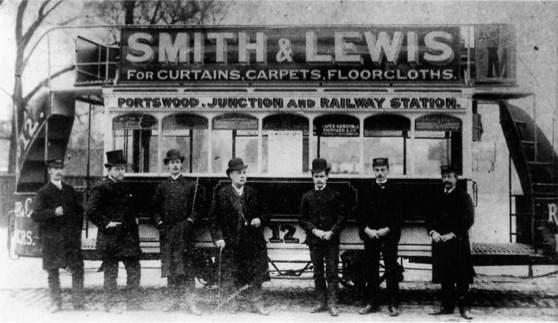
A line up of STCo senior staff in front of Horsecar No 12 — photo undated, but certainly taken no earlier than 1887 when George B Carnon became the manager. From left to right: Inspector Glasby, Veterinary Surgeon George James Gould, Manager George B Carnon, Cashier J Nash, unknown, Inspector C G Simpson and Inspector Newman (information courtesy of '100 Years of Southampton Transport'). The inspectors all have kepi-style caps bearing an elaborate cap badge. Photo courtesy of the Tramways and Light Railway Society, with thanks to David Voice.